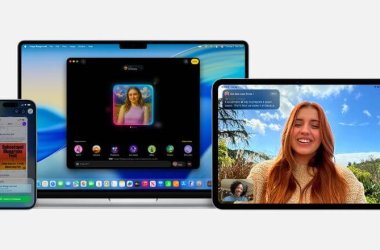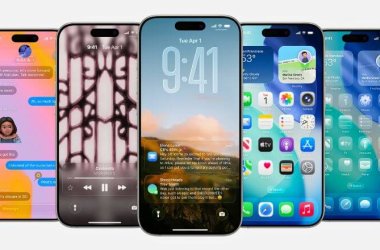Anyone who uses a smartphone knows the importance of carrying a backup power bank. But given the overwhelming number of options on Amazon, you might feel overwhelmed, understandably. Besides the various charging specs, ports, and even cables you have to consider, there are a ton of competing brands. It’s common to see products from Anker, Mophie, and MyCharge, but how do you know which ones deliver on their promises? Is it worth saving a few bucks if a battery pack’s performance is lacking?
As for the latter, be advised: Amazon has voluntarily recalled six different models of its AmazonBasics-branded external power banks after they were found to that they could potentially overheat.
Power-bank cheat sheet
Our quick-hit recommendations:
- Best overall power bank: Mophie Powerstation Plus XL
- Most portable power bank: Xiaomi 10,000mAh Mi Power Bank Pro[amazon.com]
- Best power bank for road warriors: DBPower Q100 Portable Energy Storage Battery[amazon.com]
- Best USB-C power bank: Anker Powercore+ 26800 PD[amazon.com]
We decided to do the legwork for you, acquiring a wide range of power banks from different manufacturers, some offering unique features. We then spent weeks testing the packs (read about our testing process in detail below).
While we’ve made some top picks, be sure to read through each review, linked to at the bottom of this page, to help you find the best battery pack for your needs. (You might also be interested in our our roundup of USB car chargers if you spend a lot of time in a vehicle.)
Update 3/14/2018: The Xiaomi Mi Power Bank Pro is our new pick for most portable power bank. We’ve also added the Gogo Toro’s Outlet Evaders battery pack and Xiaomi Mi Power Bank Pro to our list of reviews below. We’ve also noted Amazon’s own battery recall.
Best overall power bank
Mophie Powerstation Plus XLMophie Powerstation Plus
MSRP $99.95 on Mophie
The Mophie Powerstation Plus XL is light, easy to toss into a bag, and incredibly efficient. It’s also one of the the most expensive packs in this roundup, at $99.95. But with a 93.41 percent efficiency rating, you’re getting your money’s worth out of this pack. Combine that with a built-in charging cable with multiple tips, and you have a winner. We did have an issue with recharge time, but overall this pack is the one to beat.
Most portable power bank
Xiaomi 10,000mAh Mi Power Bank Pro
MSRP $29.99 on Amazon
Xiaomi is known for producing high quality products and selling them at an affordable price. The 10,000mAh Mi Power Bank Pro is a prime example of that approach, hitting all the marks to make it our top pick for the most portable power bank overall. With its high efficiency, premium design, and street price of $16, it’s hard to beat. Pick one or two of these up, throw them in your bag and suitcase, and forget having to worry about running out of battery power while on the road.
Best power bank for road warriors
Mentioned in this article
DBPOWER 26400mAh Laptop Power Bank, AC Outlet Portable Power Bank Travel Charger
The DBPower Q100 Portable Energy Storage Battery isn’t for those who just frequently travel, that’s where the Tronsmart Presto PBT10 excels. Instead, the Q100 is for those who frequently travel and find themselves in areas without easy access to power in general. The Q100 has an AC outlet, two USB ports, and charges in a scant 3.5 hours for a device with a 26,400mAh battery.
Best USB-C power bank
Anker Powercore+ 26800 PD with 27W PD Portable Charger Bundle
Between its capacity, recharge time, charging capabilities, USB-C, and the wide range of devices it can charge, the Anker Powercore+ 26800 PD is well worth its $110 price.
Yes, it’s big and bulky. But being able to quickly top off your phone while trekking through The Legend of Zelda: Breath of the Wild on the Nintendo Switch simultaneously is worth the added weight and the price.
For those looking for a smaller, less expensive USB-C option, you’re in luck: See our full roundup of best USB-C battery packs for some very competitive alternatives.
How we tested
Determining whether a power bank lives up to a company’s promise entails more than simply connecting it to a phone and charging. Testing battery packs is done over weeks, not days, and requires extra equipment in order to ensure the batteries work as expected.
- Upon receiving each battery pack, it was fully charged using indicator lights as a means to track charge level.
- Then to track efficiency, we used a DROK Micro Load Testercombined with the PortaPow USB Power Monitor.
Using the DROK load tester to drain the pack of power, we were able to test against a battery’s stated maximum current, and verify that proper shutdown mechanisms were in place should something go wrong during a charging session (such as a device drawing over the maximum amps).
By using the PortaPow Power Monitor, we were able to monitor volts and amps, total power throughput, and total amount of time to deplete a battery from full to empty.
- Next, we recharged the battery, this time using the PortaPow to track it throughout and the total amount of time to achieve a full battery, based on watt-hours.
There are some hiccups using this method, however. We had to use a GoPro camera to track each battery through its charge cycle, due to the PortaPow monitor continuing to collect data after the battery was fully charged (trickle charging is normal, and unfortunately interferes with our testing).
If a battery was capable of charging through USB-C, we used that instead of Micro-USB.
- We then connected each battery to a Pixel XL and LG G5 to ensure that the devices registered the expected fast-charging output for each respective device.
Power source and cables
All of our tests were conducted using the same wall adapter and, when possible, USB-C or Micro-USB cable. This was done to eliminate any discrepancies with wall adapters and cable throughput.
What to look for in a portable power bank
Without fancy testing equipment, you never truly know if you’re getting what you paid for with a battery pack. Vendors, especially in Amazon listings, like to throw around a lot of terms and certifications.
Here are a few tips to help you make a decision:
- For those with a compatible device, make sure the battery pack is Quick Charge 2.0, 3.0, or PD certified. Depending on your smartphone, this can make a big difference in performance. If you own a QC 2.0 device, however, ask yourself if paying extra for a QC 3.0 capable pack is worth it.
- Don’t put 100 percent confidence in a company’s claims of a pack being able to charge, say, a Galaxy S8 or iPhone X six times over. Battery capacity and efficiency varies based on a number of factors. Look at the specs of the battery, and ensure that its input isn’t limited to slow charging such as 5V/1A. The faster the input, the faster your battery pack rechargers, the faster you’re ready to hit the road.
All of our power bank reviews
Click on the links below to read the full reviews of all the products we tested for this roundup. We will continue to review and update this article as we test more battery packs.
You may also be considering simply buying Amazon’s AmazonBasic charger, as a way of saving money. In this case, be advised: Amazon has voluntarily recalled several models because of potential overheating. Amazon has received 53 reports of the affected models—B00LRK8EVO, B00LRK8HJ8, B00LRK8I7O, B00LRK8IV0, B00LRK8JDC or B00ZQ4JQAA—overheating, and in one case causing chemical burns. You can find more information at the Consumer Products Safety Commission, as well as Amazon’s own recall site.





